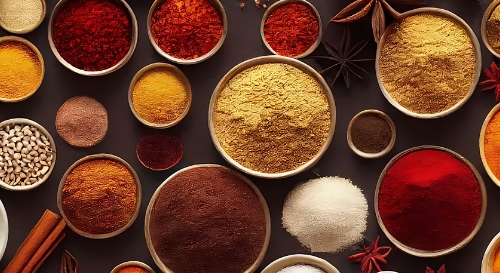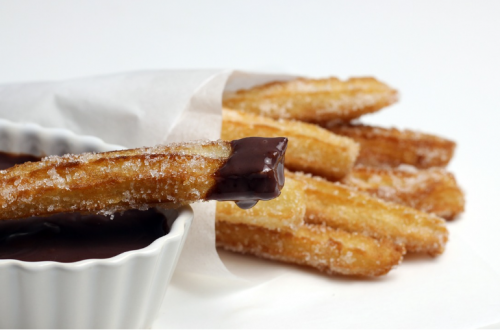
A Culinary Adventure in Asia: Exploring Flavors
Introduction: Why Asia is a Culinary Paradise
Asia has long been a paradise for food lovers, offering a culinary experience that is as diverse as the continent itself. From the spicy dishes of Thailand to the delicate balance of flavors in Japanese sushi, Asia is home to some of the most distinct and flavorful cuisines in the world. Whether you’re a seasoned traveler or a first-time visitor, the food here is an adventure in itself, each dish telling a story of cultural heritage, local traditions, and regional diversity.
In this article, we’ll embark on a journey through Asia’s culinary landscape, exploring its rich history, regional specialties, and iconic dishes. So, what makes Asian cuisine so special, and why should you consider it the next stop on your food-filled adventure?
The Richness of Asian Culinary Heritage

Asia’s culinary tradition dates back thousands of years, shaped by geography, culture, and the availability of unique ingredients. The region is a melting pot of flavors, with each country offering its own distinct take on food. From ancient silk trade routes to imperial kitchens, Asian cooking has evolved through centuries, influenced by both indigenous ingredients and foreign trade.
For example, spices from India, China, and Southeast Asia have long been sought after for their ability to transform food and enhance flavor. The use of rice, noodles, and various grains as staples in many countries provides the foundation for the region’s diverse food culture. In many Asian countries, food is not just nourishment; it’s a central part of social life and an expression of cultural identity.
Top Destinations for Culinary Exploration in Asia
Asia is filled with culinary hotspots that offer more than just food—they offer a cultural experience. Let’s explore some of the top destinations in Asia that every food lover should visit.
Thailand: The Land of Spices
Thailand is often regarded as one of the best food destinations in Asia, thanks to its perfect balance of spicy, sour, salty, and sweet flavors. Known for its bold use of herbs and spices, Thai cuisine offers a harmonious mix of flavors that tantalize the taste buds. From the streets of Bangkok to the northern mountains of Chiang Mai, Thailand’s food scene is as vibrant as its culture.
Signature Dishes to Try in Thailand
- Pad Thai: Thailand’s most famous noodle dish, typically served with shrimp, chicken, or tofu, and topped with crushed peanuts and lime.
- Tom Yum Goong: A tangy and spicy shrimp soup with lemongrass, lime leaves, and chili.
- Green Curry: A fragrant and spicy curry made with coconut milk, herbs, and your choice of meat.
- Som Tum: A spicy green papaya salad that’s both crunchy and refreshing.
China: A World of Regional Specialties

Chinese cuisine is a vast and intricate collection of flavors, influenced by thousands of years of history. From the rich, bold flavors of Sichuan cuisine to the delicate and light tastes of Cantonese food, China offers something for every palate. The beauty of Chinese cuisine lies in its regional diversity—each area has its own unique flavors, cooking methods, and ingredients.
Iconic Dishes of China
- Peking Duck: A crispy, flavorful duck that’s served with thin pancakes, hoisin sauce, and cucumber.
- Dim Sum: A variety of small dishes, from dumplings to buns, typically enjoyed as a leisurely brunch.
- Mapo Tofu: A Sichuan dish made with tofu, ground pork, and a spicy, numbing sauce.
- Hot Pot: A communal meal where you cook raw meats and vegetables in a boiling pot of broth.
India: The Kingdom of Curries and Spices
India is synonymous with bold flavors, and its cuisine is one of the most varied and complex in the world. The country’s vast landscape and rich cultural history mean that each region has its own culinary identity, from the aromatic biryanis of Hyderabad to the spicy curries of Kerala. Indian food is also known for its intricate use of spices—turmeric, cumin, coriander, and garam masala—which are used to create complex, layered flavors.
Must-Try Dishes in India
- Butter Chicken: A creamy and flavorful chicken curry that’s a favorite in Indian restaurants worldwide.
- Masala Dosa: A crispy, thin crepe filled with spiced potatoes, often served with chutneys and sambar.
- Biryani: A fragrant rice dish made with meat, spices, and herbs, often served with raita or pickle.
- Chole Bhature: A North Indian dish of spicy chickpeas served with fried bread.
Japan: Precision in Simplicity
Japanese cuisine is known for its emphasis on fresh ingredients and delicate preparation. What makes Japanese food unique is its simplicity, balance, and precision. In Japan, there’s a saying: “The simpler, the better.” This principle is evident in dishes like sushi and sashimi, where quality and freshness of ingredients are paramount.
Essential Japanese Dishes
- Sushi: Fresh fish served on vinegared rice, often accompanied by wasabi and pickled ginger.
- Ramen: A noodle soup made with a rich, flavorful broth, noodles, and toppings like pork, egg, and green onions.
- Tempura: Lightly battered and fried seafood or vegetables.
- Okonomiyaki: A savory pancake filled with ingredients like cabbage, pork, and seafood.
Exploring Street Food Culture in Asia

Street food is an integral part of Asian culinary culture. In many cities, food vendors line the streets, offering everything from skewers of grilled meat to fried dumplings and noodles. Street food is often quick, affordable, and, most importantly, incredibly delicious.
Thailand’s Vibrant Street Food Scene
Bangkok is particularly famous for its street food, where food stalls serve up everything from noodle soups to spicy salads and fried snacks. You can enjoy a bowl of spicy tom yum soup, fried spring rolls, or a quick Pad Thai—all from the comfort of a busy street corner.
Street Food in Vietnam and Indonesia
Vietnam and Indonesia also boast rich street food cultures. In Vietnam, pho—fragrant noodle soup—can be found in almost every corner, while Indonesia’s nasi goreng (fried rice) is a staple street snack.
The Influence of Asian Flavors on Global Cuisine
Over the past few decades, Asian flavors have begun to make their mark on global cuisine. From fusion dishes in the West to the rise of Asian-inspired restaurants worldwide, ingredients like soy sauce, miso, and curry are now staples in many kitchens around the world.
Fusion Dishes: Blending East with West
Asian cuisine has inspired countless fusion dishes, combining traditional Asian ingredients with Western cooking techniques. Think sushi burritos, Korean BBQ tacos, or Thai-inspired pizza. These creative culinary crossovers have brought Asian flavors to a whole new audience.
Conclusion: Embarking on Your Own Culinary Adventure

A culinary adventure in Asia is not just about tasting new foods—it’s about experiencing culture, history, and tradition in every bite. From the bustling street food markets of Thailand to the elegant simplicity of Japanese sushi, each meal tells a story. So, whether you’re planning a trip or just craving something new, Asia offers an endless world of flavors waiting to be explored.
FAQs
1. What is the most popular dish in Asia?
There’s no single “most popular” dish, but some standouts include Pad Thai from Thailand, Peking Duck from China, and Sushi from Japan.
2. Is Asian street food safe to eat?
Generally, street food in Asia is safe to eat, especially if you choose busy, well-established food stalls. Make sure the food is freshly prepared and served hot to avoid any potential foodborne illnesses.
3. What are the must-try foods in Thailand?
Some of the must-try dishes in Thailand include Pad Thai, Tom Yum Goong (spicy shrimp soup), Som Tum (papaya salad), and Green Curry.
4. How can I bring the flavors of Asia into my cooking at home?
You can start by incorporating Asian ingredients like soy sauce, ginger, garlic, and chili into your meals. Try making simple dishes like stir-fries, curries, or noodle soups to experiment with Asian flavors.




